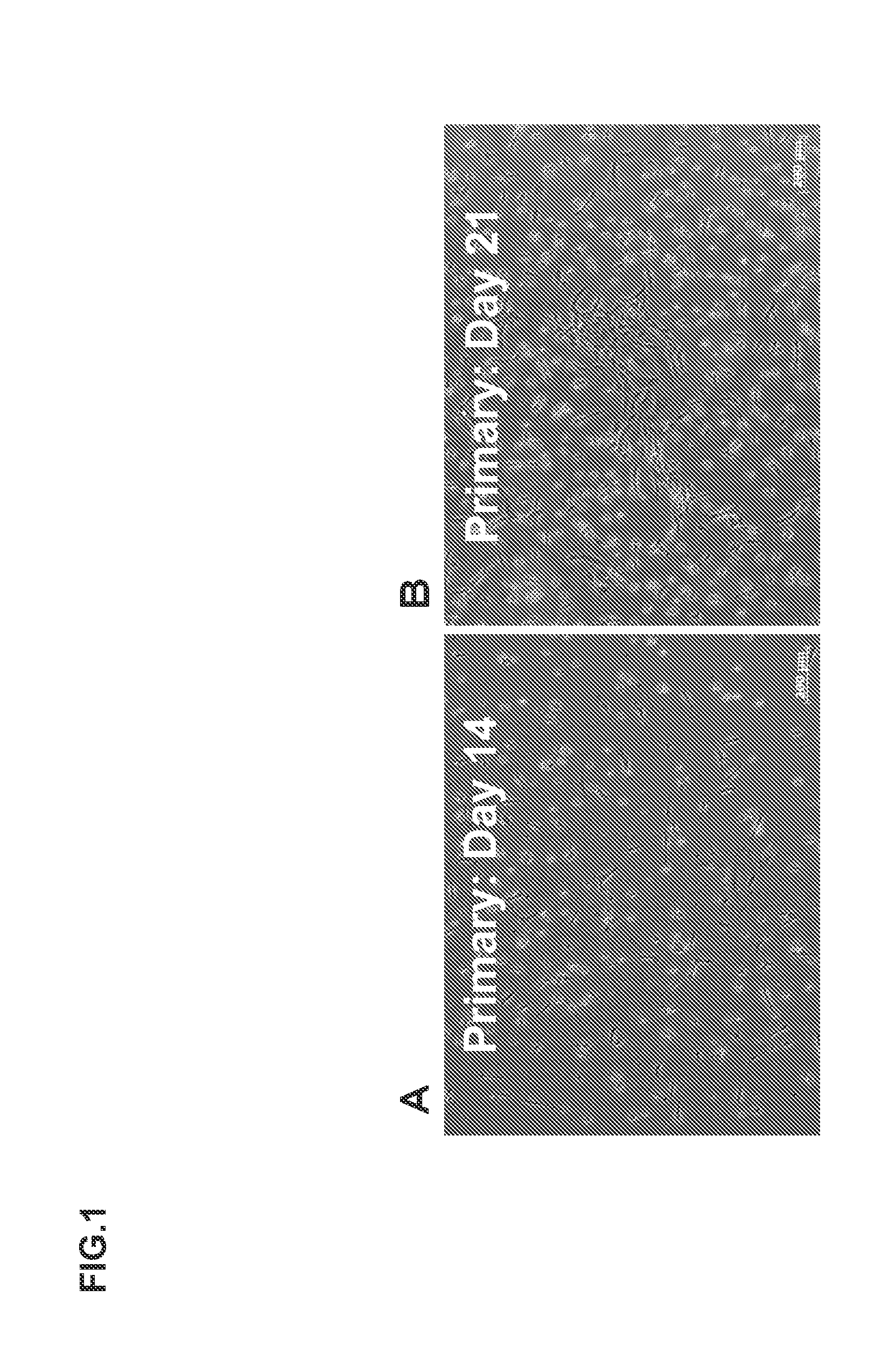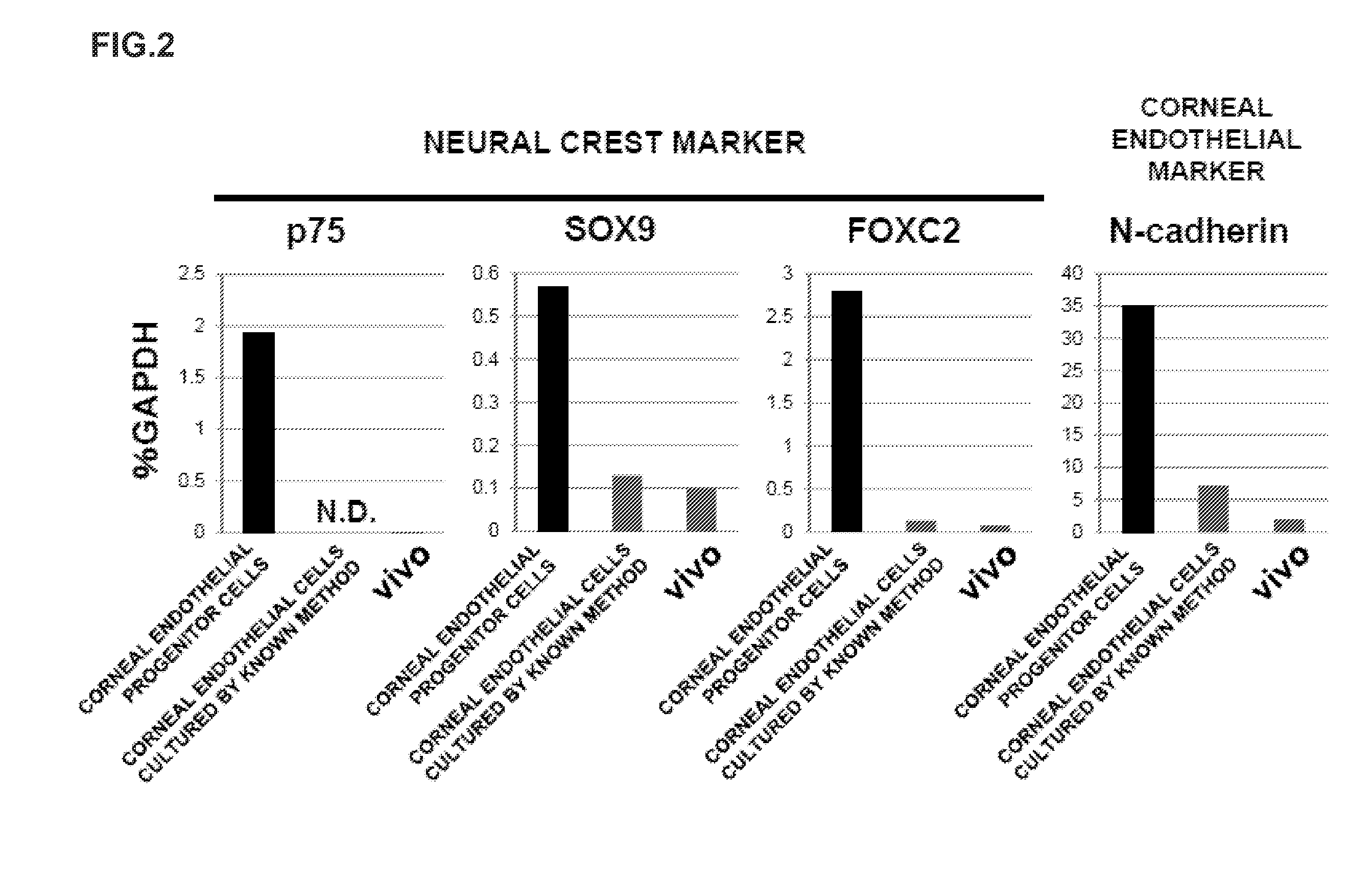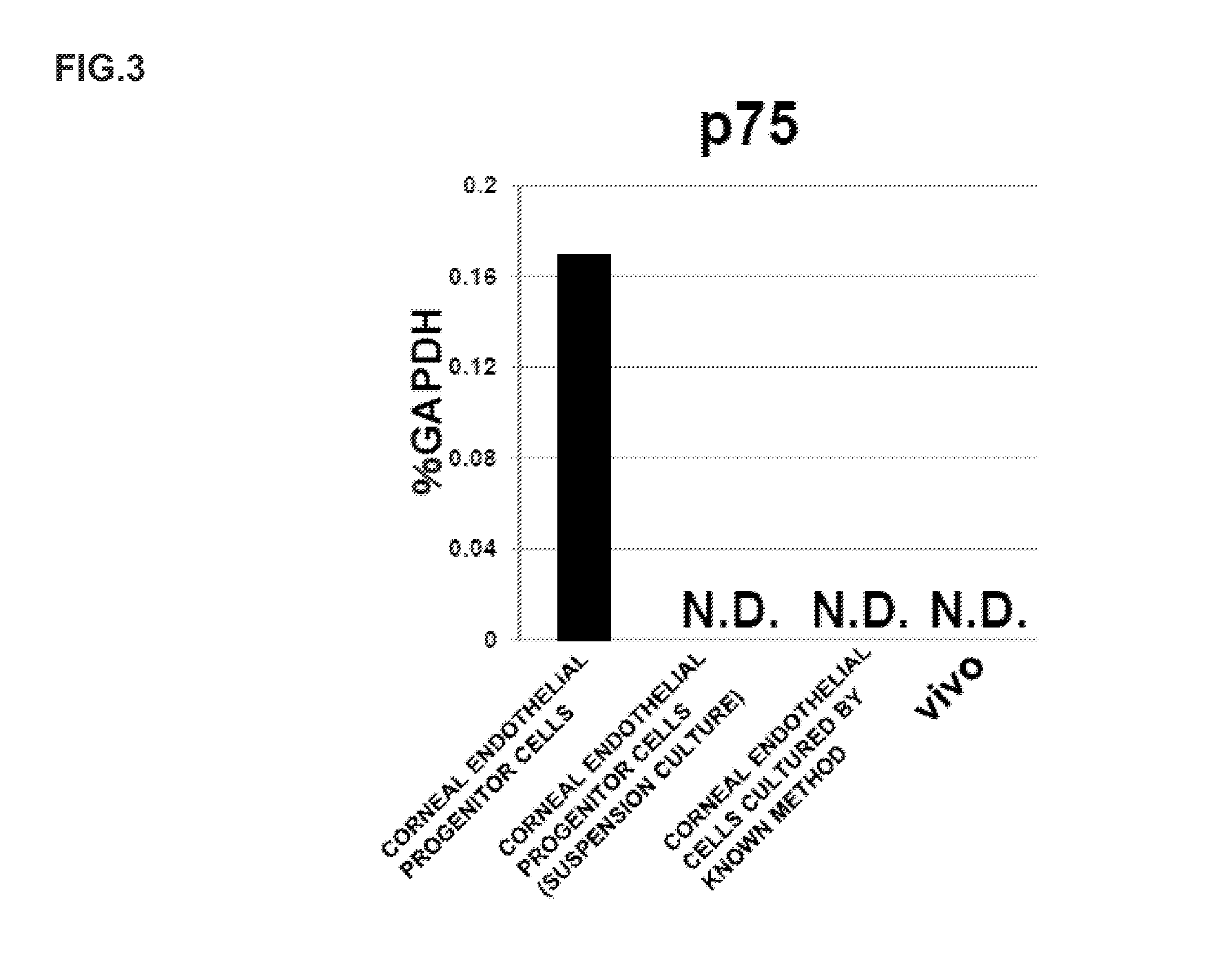Method for preparing corneal endothelial cell
a corneal endothelial and progenitor cell technology, applied in cell culture active agents, biochemistry apparatus and processes, unknown materials, etc., can solve the problems of corneal opacity or corneal endothelial disease, inability to overcome the shortage of donors, and inability to obtain donors. , to achieve the effect of high proliferation ability
- Summary
- Abstract
- Description
- Claims
- Application Information
AI Technical Summary
Benefits of technology
Problems solved by technology
Method used
Image
Examples
examples
[0109]The present invention will now be specifically described with reference to examples, and it is noted that the present invention is not limited to these examples.
[0110][Material and Method]
[0111]1. Culture and Maintenance of Corneal Endothelial Progenitor Cells
[0112]Medium for Establishing / Maintaining Corneal Endothelial Progenitor Cells[0113]DMEM / F-12 (Invitrogen, basal medium)[0114]20% KnockOUT Serum Replacement (Invitrogen, serum replacement)[0115]2 mM L-glutamine (Invitrogen)[0116]1% Non-Essential amino acid (Invitrogen)[0117]100 μM 2-mercaptoethanol (Invitrogen)[0118]4 ng / ml Basic FGF (Wako Pure Chemical Industries, Ltd.)
[0119]Coating Agent for Use in Culture of Corneal Endothelial Progenitor Cells
[0120]Matrigel™ hESC-qualified Matrix (BD)
[0121]Matrigel™ molten on ice or at 4° C. was diluted with a cooled DMEM / F12 medium (Invitrogen) 30 times, and the resultant was added to a culture dish, followed by incubation performed at 37° C. for 1 hour, so as to coat the culture dis...
PUM
| Property | Measurement | Unit |
|---|---|---|
| concentration | aaaaa | aaaaa |
| volume | aaaaa | aaaaa |
| temperature | aaaaa | aaaaa |
Abstract
Description
Claims
Application Information
 Login to View More
Login to View More - R&D
- Intellectual Property
- Life Sciences
- Materials
- Tech Scout
- Unparalleled Data Quality
- Higher Quality Content
- 60% Fewer Hallucinations
Browse by: Latest US Patents, China's latest patents, Technical Efficacy Thesaurus, Application Domain, Technology Topic, Popular Technical Reports.
© 2025 PatSnap. All rights reserved.Legal|Privacy policy|Modern Slavery Act Transparency Statement|Sitemap|About US| Contact US: help@patsnap.com



